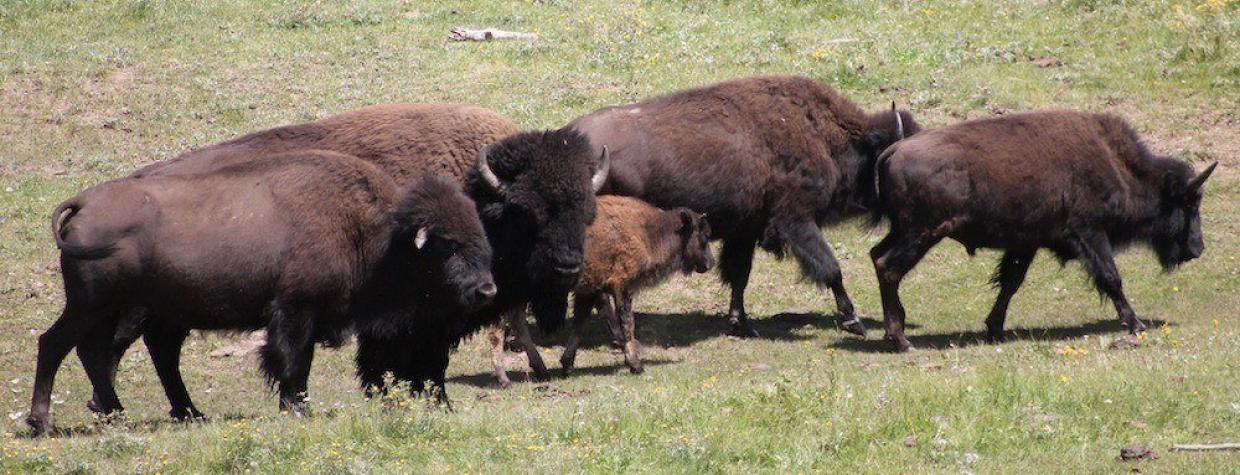We told you earlier this week that the North Rim of Grand Canyon National Park is now open for business. Now, an ongoing study of how to manage a herd of non-native bison that roam near the North Rim is ready for public review and comment, the National Park Service announced last week.
The bison, frequently sighted along the North Rim Parkway, are descended from animals brought to the area in 1906. They numbered about 100 in the 1990s, but now, there are estimated to be 400 to 600 of them on the Kaibab Plateau, the Park Service said. That number could grow to nearly 800 in the next three years, and 1,200 to 1,500 within 10 years, if management actions are not taken, according to the Park Service. That would increase the herd's impact on the park's water, vegetation, soils and archaeological sites.
An initial environmental assessment of how to reduce the herd size has been completed, and through June 7, it's available for public review and comment at this link.
The Park Service said the goal is to reduce the herd to fewer than 200 animals, and its "preferred alternative" for reaching that goal would involve a combination of "lethal culling" and non-lethal capture and removal.
The Kaibab Plateau herd is one of two Arizona herds of bison, which are not known to have ever roamed in Arizona prior to their introduction in the 1900s. The other herd is at the Raymond Wildlife Area, about 40 miles southeast of Flagstaff.
Before 1800, tens of millions of bison roamed present-day Canada, the United States and northern Mexico, but due to widespread hunting in the 19th century, just 1,100 were left by 1900. Today, there are around 500,000 bison in North America, although most of them have been cross-bred with cattle.

